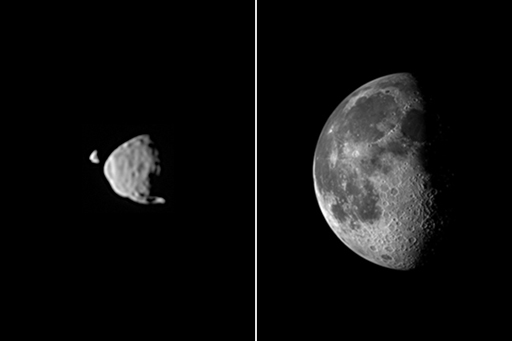3.1 The groovy moon

Figure _unit4.4.1 Figure 42 Left: Phobos (nearer and larger) and Deimos (smaller and further away) seen from the surface of Mars. Right: our own Moon, as it would appear in the martian sky if it were at the same distance from Mars as it is from Earth.
Test your understanding of John Murray’s explanation for the origin of the grooves on Phobos as explained in the previous video. Which of the explanations below did he suggest as the cause of the grooves on Phobos?
- fractures associated with the impact onto Phobos that caused the crater Stickney
- Phobos passing through a hail of ejecta thrown out by an impact on Mars
- gases escaping from the interior of Phobos
- fractures caused by the distortion of Phobos caused by Mars’ gravity.
Find out the answer to this question in the next section, and watch a short video of Phobos and Deimos shot from the surface of Mars.
